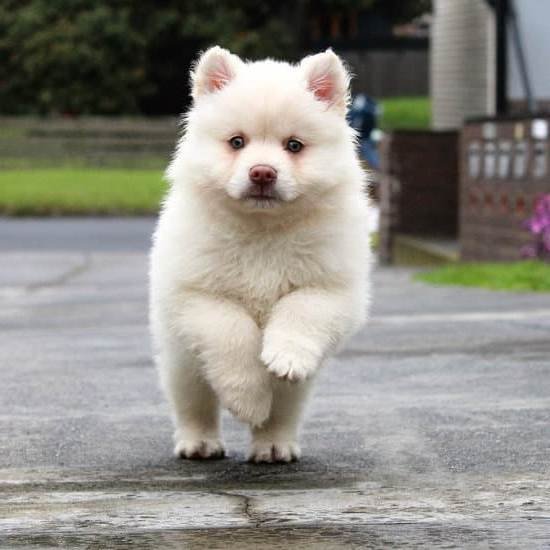Are you struggling with training your dog? Dog collar training could be the solution you need to effectively teach your furry friend obedience and behavior modification. This comprehensive guide will provide you with valuable insights into the world of dog collar training, including understanding different types of collars, proper fit, step-by-step training techniques, common mistakes to avoid, tips for consistency, troubleshooting challenges, and the advantages of using this method for pet behavior modification.
Dog collar training is a popular and effective method used by many pet owners to train their dogs. Whether you are dealing with behavioral issues or simply want to improve your pup’s obedience, understanding the fundamentals of dog collar training is crucial for successful results. In this article, we will explore everything you need to know about using a dog collar as a training tool for your beloved pet.
From choosing the right type of collar to ensuring a proper fit, introducing the collar to your pet, and implementing effective training techniques, we will delve into various aspects of dog collar training. Additionally, we will discuss common mistakes to avoid, tips for consistency and positive reinforcement, troubleshooting challenges that may arise during training sessions, and the advantages of using this method for behavior modification.
Whether you are a new pet owner or looking for alternative methods to improve your current training efforts, this guide will equip you with the knowledge and resources needed for successful dog collar training.
Understanding Different Types of Dog Collars
When it comes to dog collar training, it’s important to understand the different types of dog collars available on the market. Each type of collar serves a different purpose and has its own set of benefits and drawbacks. The most common types of dog collars include flat collars, martingale collars, choke chains, prong or pinch collars, head halters, and harnesses.
Flat collars are the most commonly used type of dog collar and are suitable for everyday use. They are adjustable and come in various materials such as nylon, leather, or fabric. Martingale collars are designed for dogs with narrow heads such as Greyhounds and prevent them from slipping out of their collar.
Choke chains and prong or pinch collars are controversial and should only be used under the guidance of a professional dog trainer. They can potentially cause harm to your pet if not used correctly.
Head halters, also known as gentle leaders or snoot loops, are designed to provide control over your dog’s head rather than its neck and are particularly useful for dogs that tend to pull on walks. Harnesses are another alternative that can be used for training and offer more control without putting pressure on the neck.
Overall, it’s crucial to choose the right type of collar for your dog based on its size, breed, behavior, and specific training needs. Understanding the different types of dog collars will help you make an informed decision when selecting the most suitable one for your furry friend.
| Type of Collar | Purpose |
|---|---|
| Flat Collar | Everyday use; adjustable; various materials |
| Martingale Collar | Prevents dogs with narrow heads from slipping out; provides more control |
| Choke Chains & Prong/Pinch Collars | Controversial; potential harm if not used correctly; need professional guidance |
| Head Halters & Harnesses | Control over head rather than neck; useful for dogs that pull on walks |
The Importance of Proper Fit for Dog Collars
When it comes to dog collar training, the importance of a proper fit for your pet’s collar cannot be overstated. A well-fitted collar is essential for ensuring your dog’s comfort and safety during training sessions. An improperly fitted collar can lead to discomfort, chafing, or even injury for your furry friend.
One of the key considerations for proper collar fit is ensuring that the size and width of the collar are suitable for your dog’s breed and size. For example, smaller breeds may require narrower collars to avoid putting unnecessary pressure on their delicate necks, while larger breeds may need wider collars to distribute the pressure more evenly.
In addition to size and width, it’s crucial to adjust the collar so that it fits snugly but not too tight around your dog’s neck. You should be able to slide two fingers between the collar and your dog’s neck without difficulty.
This ensures that the collar is secure enough to prevent escape but not so tight as to cause discomfort or restrict breathing. Investing in a high-quality, adjustable collar can make finding the perfect fit much easier.
| Proper Fit Considerations | Importance |
|---|---|
| Size and Width | Ensure comfort and safety during training sessions |
| Adjustment | Fits snugly but not too tight |
| Investing in a high-quality, adjustable collar | Easier finding perfect fit |
Remember that as your dog grows or gains/loses weight.
their collar might need adjustments accordingly.
By Paying Attention to the Proper Fit of Your Pet’s Collar
And Making Necessary Adjustments, You’ll Create a Safe
And Comfortable Environment for Effective Dog
collar training.
Step-by-Step Guide to Introducing a Dog Collar to Your Pet
Introducing a dog collar to your pet is an important step in their training and overall behavior modification. It’s crucial to approach this process with patience and understanding, as some dogs may be resistant to wearing a collar at first. Here is a step-by-step guide to help you introduce a dog collar to your pet:
1. Choose the right collar: There are different types of collars available, including flat buckle collars, martingale collars, and head collars. Consider your dog’s size, breed, and behavior when choosing the appropriate collar for them.
2. Familiarize your dog with the collar: Before putting the collar on your dog, allow them to sniff and inspect it. This can help reduce any fear or anxiety they may have about the new accessory.
3. Positive association: Once your dog is comfortable with the collar, associate it with positive experiences such as treats or playtime. This will help create a positive association with wearing the collar.
4. Gradual introduction: Start by placing the collar around your dog’s neck for short periods of time, gradually increasing the duration as they become more comfortable. Monitor their behavior and body language throughout this process.
5. Practice walking on a leash: Once your dog is used to wearing the collar, attach a leash and practice walking around your home or yard. Use positive reinforcement techniques such as treats and praise to encourage good behavior while on the leash.
6. Consistency is key: Be patient and consistent in your approach to introducing the collar to your pet. Avoid forcing the collar on them or rushing through the process, as this can cause stress and resistance.
By following these steps and incorporating positive reinforcement techniques, you can effectively introduce a dog collar to your pet and set them up for successful training experiences in the future.
Effective Techniques for Training With a Dog Collar
Positive Reinforcement
One of the most effective techniques for training with a dog collar is positive reinforcement. This involves rewarding your dog for exhibiting the desired behavior while wearing the collar. Whether it’s through treats, praise, or playtime, positive reinforcement can help your pet associate wearing the collar with a positive experience. By using this technique consistently, your dog will be more likely to respond well to the collar and the commands associated with it.
Consistency
Consistency is key when it comes to training with a dog collar. It’s important to use the collar in a consistent manner, both in terms of applying commands and providing rewards. This helps your pet understand what is expected of them when the collar is on. Inconsistency can lead to confusion and make it more difficult for your dog to learn proper behaviors and responses while wearing the collar.
Communication
Using a dog collar for training requires clear communication between you and your pet. This means using consistent verbal cues paired with specific actions while using the collar. It’s important to ensure that your dog understands what is expected of them when they feel the sensation of the collar, whether it’s a gentle tug or a correction. Effective communication will help facilitate learning and ensure that your pet responds appropriately to the training process.
Common Mistakes to Avoid When Using a Dog Collar for Training
When it comes to using a dog collar for training, there are some common mistakes that pet owners should avoid in order to ensure the effectiveness and safety of the training process. Here are some of the most typical mistakes to watch out for:
- Choosing the wrong type of collar: One of the most common mistakes in dog collar training is selecting the wrong type of collar for your pet. It’s important to understand the different types of collars available and choose one that is suitable for your dog’s size, breed, and temperament.
- Improper fit: Another mistake to avoid is using a collar that does not fit your dog properly. A collar that is too tight can cause discomfort and even injury, while a collar that is too loose may not provide effective control during training sessions.
- Using the collar as a punishment tool: Some pet owners make the mistake of using the dog collar as a punitive device. However, it’s crucial to understand that a collar should be used as a training aid, not as a punishment tool. Using the collar in this way can lead to fear, anxiety, and even aggression in your pet.
By avoiding these common mistakes, pet owners can ensure that their dog’s training with a collar is effective and safe. Properly fitting the right type of collar for positive reinforcement during training sessions will help create a better bonding experience between you and your furry friend.
Tips for Consistency and Positive Reinforcement in Dog Collar Training
When it comes to dog collar training, consistency and positive reinforcement are key to achieving successful results. Consistency means using the collar in the same way every time, while positive reinforcement focuses on rewarding good behavior rather than punishing bad behavior. This section will provide some tips for effectively implementing these principles in your dog collar training.
Be Clear and Concise With Commands
One of the most important aspects of consistency in dog collar training is being clear and concise with your commands. Use the same verbal cues each time you want your pet to perform a specific action, and be sure to follow up with the same physical cue if needed. This helps your dog understand what is expected of them and reduces confusion.
Use High-Value Treats for Positive Reinforcement
Positive reinforcement is all about rewarding good behavior, and using high-value treats can be a great way to do this. When your dog responds correctly to a command while wearing their collar, immediately reward them with their favorite treat. This will reinforce the desired behavior and make them more likely to repeat it in the future.
Stay Patient and Persistent
Consistency and positive reinforcement take time and patience. It’s important to remain calm and consistent with your training efforts, even when your dog doesn’t seem to be progressing as quickly as you’d like. Avoid getting frustrated or resorting to negative reinforcement, as this can have a detrimental effect on your dog collar training efforts.
By following these tips for consistency and positive reinforcement in dog collar training, you can help ensure that your pet learns effectively while maintaining a strong bond with you as their trainer.
Troubleshooting Common Challenges in Dog Collar Training
Dog collar training can be an effective way to modify your pet’s behavior, but it is not without its challenges. Many pet owners may encounter difficulties when using a dog collar for training, such as resistance from the dog or lack of progress in behavior modification. However, these challenges can be overcome with the right approach and understanding.
One common challenge in dog collar training is when the dog exhibits fear or anxiety towards the collar. This may stem from a negative past experience with a collar or discomfort with the sensation of wearing one. To address this challenge, it is important to introduce the collar gradually and associate it with positive experiences. This can be done by offering treats and praise whenever the dog shows calm behavior while wearing the collar.
Another challenge that pet owners may face is resistance or disobedience from their dogs during training sessions. This could be due to various reasons, such as lack of proper communication between the owner and the pet, or inconsistency in training methods.
In such cases, it is important to reassess the training approach and ensure that clear commands are being given to the dog. Additionally, maintaining consistency in training sessions and providing positive reinforcement for desired behaviors can help overcome this challenge.
It is also common for pet owners to encounter difficulties in finding the right level of correction for their dog when using a training collar. Using too much correction can cause distress to the animal, while using too little may result in ineffective training.
It is important to carefully observe your dog’s response to different levels of correction and make adjustments accordingly. Additionally, seeking guidance from a professional trainer can provide valuable insight into determining the appropriate level of correction for your specific pet.
Advantages of Using Dog Collar Training for Pet Behavior Modification
In conclusion, dog collar training can be a highly effective method for behavior modification in pets. When used correctly, it can help address various behavioral issues and ensure that your furry friend understands and responds to commands appropriately. One of the main advantages of using dog collar training is its ability to provide consistent and immediate feedback to your pet, helping them understand what is expected of them in real-time.
Additionally, dog collar training allows for personalized training based on your pet’s specific needs and behaviors. Whether it’s addressing aggression, excessive barking, or leash pulling, the right type of collar and proper training techniques can make a significant difference in shaping your pet’s behavior. With patience, consistency, and positive reinforcement, dog collar training can lead to long-term behavior modification that enhances the bond between you and your pet.
It’s important to note that while dog collar training can be highly effective, it should always be used responsibly and with the well-being of your pet in mind. Understanding different types of collars and ensuring a proper fit is crucial.
Always consult with a professional trainer or veterinarian if you have any concerns about using a dog collar for training. With the right approach, dog collar training can be a valuable tool in shaping your pet’s behavior and fostering a positive relationship built on trust and understanding.
Frequently Asked Questions
Is a Training Collar Good for Dogs?
A training collar can be good for dogs if used properly and responsibly. It can help with obedience training and correcting unwanted behaviors, but it should not be a substitute for positive reinforcement and proper training techniques.
What Type of Collar Is Best for Dog Training?
The best type of collar for dog training ultimately depends on the individual dog and their specific needs. Some trainers prefer flat collars, while others may recommend martingale collars or head halters. It’s important to consult with a professional trainer to determine the best option for your dog.
Do Vets Recommend Bark Collars?
Vets have varying opinions on bark collars. Some may recommend them as a last resort for excessive barking issues, while others believe that they can be harmful or ineffective in the long run. It’s best to seek advice from a qualified behaviorist before using bark collars on your dog.

Welcome to the blog! I am a professional dog trainer and have been working with dogs for many years. In this blog, I will be discussing various topics related to dog training, including tips, tricks, and advice. I hope you find this information helpful and informative. Thanks for reading!





